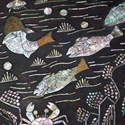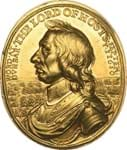It was that of the great Edo period ukiyo-e painter and printmaker Katsushika Hokusai (1760-1849).
This 15 x 10in (38 x 24cm) print, sold at Hannam’s (23% buyer’s premium) in Selborne, Hampshire, on January 11-14, is known as Joshu Ushibori (Ushibori in Hitachi Province) and was one of the Fugaku sanjurokkei (Thirty-Six Views of Mount Fuji) issued from c.1830-32.
Hokusai’s most celebrated work, The Great Wave off Kanagawa, is part of the series.
The earliest of these Mount Fuji prints were made with these blue tones (aizuri-e). Prussian blue pigment had not long been introduced to Japan from Europe and Hokusai used it extensively. Once the publisher, Nishimura Yohachi, was sure of the series’ success, prints were made with multiple colours (nishiki-e).
Estimated at just £50-75 (the guide given to a dozen Japanese woodblock prints in the sale), it sold rather better at £6800 to an online buyer using thesaleroom.com.
The price is a good one: versions of this print offered in recent specialist sales at Sotheby’s and Christie’s have hammered at £4000 each.
In the same four-day Hannam’s sale of Fine Antiques & Oriental Works of Art, a copy of Snow at Kinryuzan Temple in Asakusa by Utagawa Hiroshige (1797-1858), from the Famous Places in Edo series c.1847-48, sold at £1900.
Korean surprise
A surprise bid of £3000 (estimate £100-150) also came for a Korean table with carved ‘buds’ to the base and a 12in (30cm) diameter lacquer top depicting a scene of fish and pondlife in a landscape.
Employing the technique of mother-of-pearl inlay (najon in Korean), it probably dated from the end of the Joseon dynasty (1392-1897).



















